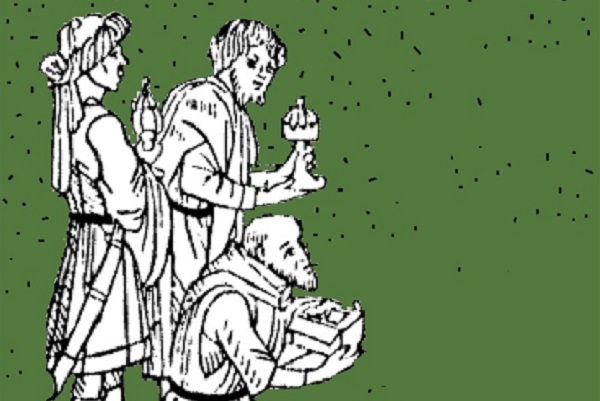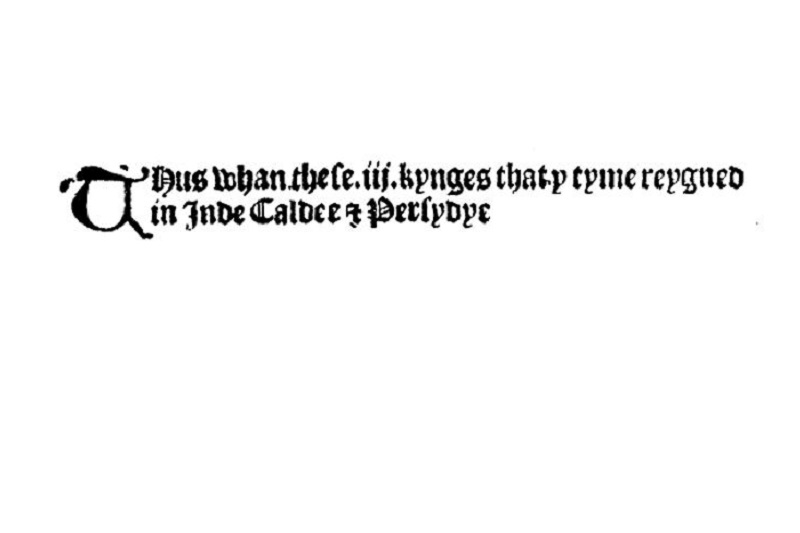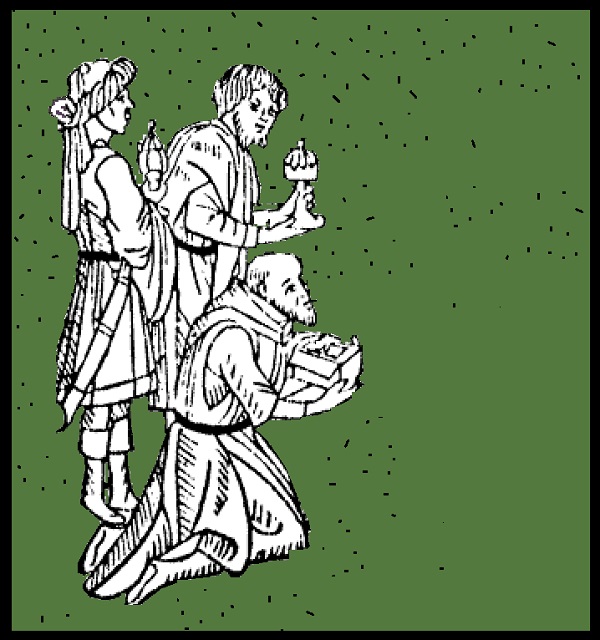University Libraries

We Three Kings … of Cologne
By Joan Milligan
Jan. 6, call it what you will — Twelfth Night, Epiphany, Dia de los Reyes Magos — is the last day of Christmas. It commemorates the day the three kings, following a star to Bethlehem, arrived at the Christ child’s birthplace with lavish gifts.
Among the many books in the Marian Library about the Nativity — the art, the theology, the prayers and devotions — is a modern compilation of two early 15th-century manuscripts that were translated into English as The Three Kings of Cologne (1955, reprinted 1978). It is the work of Margaret B. Freeman, curator emerita of The Cloisters in New York City. It is illustrated with 14th-century woodcuts by John of Hildesheim, a Carmelite friar who is believed to be the author of Historia Trium Regum, the original Latin version.
Wait … Cologne?
“The kings of Cologne?” you may be wondering. “Who are they?”
They’re the same kings who brought Jesus those gifts of gold, frankincense, and myrrh we’re always hearing about. But there are many differences too. In this version, they are from three “Indias,” to which St. Thomas the Apostle travels many years later in order to christen them. The kings go on to preach and become archbishops.
There are many other stories within this story. You’ll read about the 30 gilt pennies Melchior gave at Jesus’ birth. You’ll never guess where those pennies ended up three decades later.
Where are they now?
After the kings’ deaths, St. Helena, mother of Constantine, also makes an appearance, traveling to bring the bodies to Constantinople. The men are eventually laid to rest, together, in Cologne in the “fair church of St. Peter … where they are kept and venerated by all manner of nations.” If you visit Kölner Dom today, you can see the magnificent Der Dreikönigenschrein, encrusted with jewels and pearls and said to house the kings’ relics.
These stories, very popular in the Middle Ages, were forgotten for hundreds of years. Johann Wolfgang von Goethe encountered a Latin manuscript of it in 1818, found it “charming,” and brought it back into public notice.
Illustrations included here are from a 1511 version of The Thre Kynges of Coleyne available online in our collection Early English books online. Artist unknown.
Further reading
Here are more works about the holiday you may enjoy:
- A Sermon Concerning the Epiphany: Preached at the Cathedrall Church of Christ in Oxford by Richard Gardyner (1639): Available in Marian Library Rare Books and online.
- Het Driekoningenfeest by Anke A. van Wagenberg-ter Hoeven (1997): A big holiday in the Netherlands, it’s the chosen subject of many a 17th-century Dutch painter.
- The Fourth Wise Man DVD (2002): Film starring Martin Sheen based on Henry van Dyke’s The Story of the Other Wise Man.
- The Very Special Visitors: The Story of the Wise Men retold by Ruth Shannon Odor; illustrated by Karen Clark (1992): a version for children.
- Three Wise Women by Mary Hoffman; pictures by Lynne Russell: a children’s book about three women who also make the journey to Bethlehem.
— Joan Milligan is special collections cataloger in the University Libraries.


